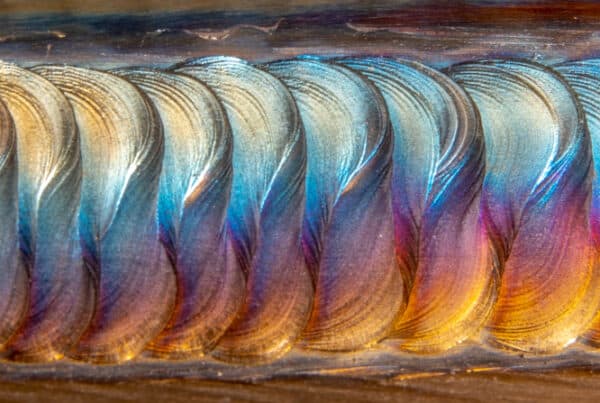
Tungsten has been an important part of the welding industry with a specialized welding process named after it–TIG or Tungsten Inert Gas Welding. Since the 1940s, tungsten electrodes have proven to be a reliable component for welding a wide variety of metals including–aluminum, carbon steel, titanium, and many more. Tungsten electrodes provide many advantages when welding, including:
- Easy arc start
- Greater arc stability
- Flexible working with different metals
- Smooth welding due to its non-consumable nature
- Ability to pass high current
- Lesser risk of contamination
When TIG welding, tungsten pairs with inert gas to shield the weld pool from unwanted contaminants–gases or slags. However, tungsten inclusion in welding can be a major source of weld defects. Identifying the cause of this inclusion and the way to minimize it is one big task for welders and operators.
Tungsten Inclusion and its Effect on the Weld Joint
As the name suggests, tungsten inclusion is when the particles of tungsten get included in the weld pool. This common GTAW/TIG welding defect can also be observed in plasma arc welding. The tungsten particle can detach from the electrode and into the weld puddle due to reasons including:
- The tungsten electrode is dipped into the weld pool, transferring the contaminants
- High current melts the imperfection and burrs off the tungsten electrode
- Low-quality tungsten electrodes–have cracks or contaminants
- Use of the wrong type of electrode
The tungsten inclusion in the weld risks the formation of cracks or porosity in the joint. This is because of the difference in the expansion coefficient of the tungsten and the base metal. Tungsten inclusion can also lead to changes in the hardness of the metal.
These inclusions are difficult to detect visually and require NDT (non-destructive testing) methods such as radioactive inspection.
How To Reduce Tungsten Inclusion in Welding
There are many ways of minimizing tungsten inclusion when GTAW welding. The first and the most obvious is keeping the tungsten from dipping into the molten puddle. It is also important to ensure that the electrode being used is of high quality and has accurate size, dimension, and grind angle. Here are some additional ways to reduce tungsten inclusion.
- The electrode should be well prepared (well polished, free of cracks and contaminants).
- Welding current should be within the limit that tungsten electrode can withstand.
- The electrode must be at a safe distance from the weld pool, minimizing the chances of contaminant transfer.
- The orbital welding process controls the arc, reducing the risk of electrode particles from falling off and contaminating the weld pool.
Orbital Welding and Tungsten Electrodes
When welding with different types of tungsten electrodes, orbital welding offers a controlled supply of current. Whether the electrode composition is pure, thoriated, lanthanated, or ceriated, when the orbital welding is paired with the quality electrode, it offers consistent and precise performance. Quality tungsten electrode means it has an even distribution of alloying agents and has an optimally machined tip.
Apart from controlled weld parameters, the orbital welding machine also ensures the right spacing between the electrode and workpiece, so it does not come in contact with the weld pool and contaminate it. With the right tungsten electrode type and automated control, it is possible to minimize tungsten inclusion when orbital welding.
Achieve Quality Welds With Right the Tungsten Electrode
Inclusion of any kind is a risk for the weld joints. It induces defects and reduces the strength of the joint, leading to potential failure under stress conditions. When a tungsten electrode is used, defects may come in the form of tungsten inclusion. The use of quality tungsten electrodes with an orbital welding machine is the way to prevent this problem. Understanding the metallurgy of the tungsten electrode, and workpiece, and ensuring weld control is sure to produce a quality result.
Arc Machines, Inc is a leading provider of orbital welding technologies. We offer precision orbital welding machines and high-quality tungsten electrodes to support the reduction of tungsten inclusion in welding and boost weld quality. For inquiries regarding products, contact sales@arcmachines.com. For service inquiries, contact service@arcmachines.com. To develop a custom solution, contact us to arrange a meeting.




